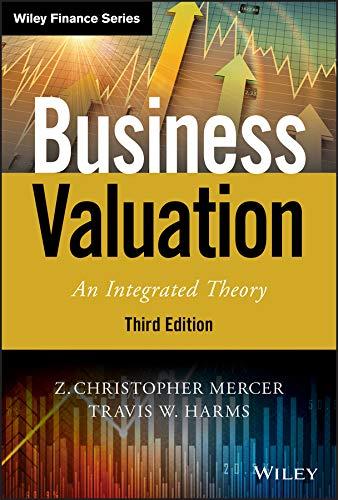Question
Part B. CAPITAL BUDGETTING In December 2020, Vivian Richards, the controller for the Toronto Paper Mill, was considering the addition of new on-site long-wood woodyard.
Part B. CAPITAL BUDGETTING
In December 2020, Vivian Richards, the controller for the Toronto Paper Mill, was considering the addition of new on-site long-wood woodyard. The addition would have two primary benefits: to eliminate the need to purchase short-wood from an outside supplier and create the opportunity to sell short-wood on the open market as a new market for Wonder Paper Company (WPC). The new woodyard would allow the Toronto Paper Mill not only to reduce its operating costs but also to increase its revenues. The proposed woodyard will utilise new technology that allows tree-length logs, called long-wood, to be processed directly, whereas the current process required short-wood, which had to be purchased from the Wellington Mill.
This nearby mill, owned by a competitor, has excess capacity that allows it to produce more shortwood than it needs for its own pulp production. The excess is sold to several different mills, including the Toronto Paper Mill. Thus, adding the new long-wood equipment would mean that Richards would no longer need to use the Wellington Mill as a short-wood supplier and that the Toronto Paper Mill would instead compete with the Wellington Mill by selling on the short-wood market. The question for Richards was whether these expected benefits were enough to justify the $36 million capital outlay plus the incremental investment in working capital over the six-year life of the investment.
Construction would start within a few months, and the investment outlay would be spent over two calendar years: $ 32 m in 2021 and the remaining $4m in 2022. When the woodyard begins operating in 2022, it would significantly reduce the operating costs of the mill. These operating savings would come mostly from the difference in the cost of producing short-wood on-site versus buying it on the open market and were estimated to be $4m for 2022 and $7m per year thereafter.
Richards also planned on taking advantage of the excess production capacity afforded by the new facility by selling short-wood on the open market as soon as possible. For 2022, he expected to show revenues of approximately $ 28m, as the facility came on-line and began to break into the new market. He expected shortwood sales to reach $40m in 2023 and continue to grow at 10% per year through to 2027. Richards estimated that the cost of goods sold (before including depreciation expense) would be 70%.
In addition to the capital outlay of $36m, the increased revenues would necessitate higher levels of inventories and accounts receivable. Therefore, the amount of working capital investment each year would equal 20% of incremental sales for the year. At the end of the life of the equipment, in 2027, all the net working capital on the books would be recoverable at cost fully.
Taxes would be paid at a 30% rate, and the equipment depreciation is to be calculated on a straightline basis over the six-year life to zero balance. However, the new equipment is estimated to have a salvage value (scrap value) of $6m at the end of its life. WPCs accountants have told the Toronto Paper Mill that depreciation charges could not begin until 2022, when all the $ 36m had been spent and the equipment is in service.
WPC has a company policy to use 15% as the hurdle rate for such investment opportunities. The hurdle rate is based on the study of the companys cost of capital conducted 5 years ago.
- Prepare cash flow statement/s and compute the NPV and IRR of the proposed project. Comment on the feasibility of the project. (18 marks) (1000 words)
Step by Step Solution
There are 3 Steps involved in it
Step: 1

Get Instant Access to Expert-Tailored Solutions
See step-by-step solutions with expert insights and AI powered tools for academic success
Step: 2

Step: 3

Ace Your Homework with AI
Get the answers you need in no time with our AI-driven, step-by-step assistance
Get Started


